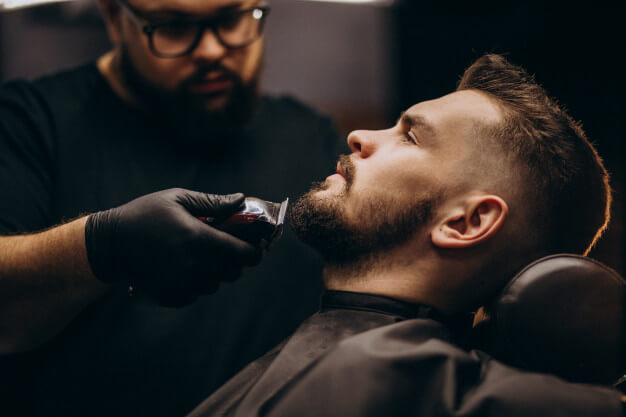Growing a beard is a matter of choice for most men. Some consider it a matter of faith and for others, it may be a manly look, a casual look, or just a changing routine with the fashion trends. Whatever may be the reason behind it is the fact that most of the men like keeping a beard than the hassle of shaving on a daily basis. Beard is considered a symbol of “Man-ism” in many parts of the world (for some people this thing may be debatable though).
Growing a beard and maintaining it is definitely a task that can only be understood by either a professional barber or a person who owns one. Most people think that growing and maintaining a beard is not a difficult task at all but the fact is that takes a lot of effort to build and maintain it well and good-looking. Many youngsters use stubble trimmers to keep the beard short and straightforward whereas others want it a full lumberjack.
Growing your beard:
Once you decide that you want to increase your beard then you should know that it will take a week or so to make a stubble look depending on your hair growth rate. Some will want it to keep it that way if you want a medium length or a fully-grown beard that it may take 4 to 6 weeks on average to reach to make a full form.
Depending on your basic genetics, your beard may have thick and densely grown hair or relatively thin hair with hair in patches with low density. Whatever the case maybe you need to let them grow in the initial phase.
Initial Phase of beard growth:
While you get past the first week of hair growth, you need to keep patient and let it go further without any attempt of trimming and shaping your beard. If there is really think that there are some stray hairs, you may take care of them, but you shouldn’t try to cut short or shape the rest of your beard.
However, you should keep your face skin, and hair clean by using a quality face wash at least twice a day to keep away any dirt and dust which may have entrapped in the hair.
Beard growing phase:
From the second week onwards, you will see your beard start developing and taking proper shape. During this period, you will feel a lot of itchiness which maybe something new and painful for most of the guys. Don’t fall prey to this and let it grow as this is a normal phase of growing a beard, some people make a mistake after getting irritated and shave it clean or trim it.
To keep the itchiness to a minimum use facial cleaner and try to exfoliate skin for complete cleansing. Use face moisturizers to soothe your skin. Using good beard oil may also help to reduce itchiness during this growth period. Keeping your face skin and beard hair clean, and massage with a quality oil will get you through this phase of growing a beard.
Your beard Style:
After 4-6 weeks your beard will take its full form of a grown beard, now is the time for you to decide your style and start its proper maintenance and care.
At this stage, if you want a full-length beard, you should only look to trim it slightly to maintain its proper shape or if you want it to be a medium or short length then you can get it shaved to the desired length by a barber or yourself using a good quality trimmer. You may use stubble trimmers to get it a clean, stylish look if you want to.
Beard Care and Maintenance:
It is a better way to train yourself to maintain your beard by acquiring some necessary tools; you may also use the services of a professional barber if you have a trusted guy within your reach. Most people prefer doing it themselves due to hygienic issues and avoiding unnecessary expenses.
Regular maintenance of your beard will keep it clean and pleasant looking and will add to your style and personality.
Some tips for beard maintenance:
Use some of the following ways to maintain a keep good care of your beard.
- Use an electric trimmer or simple comb and scissors to trim your beard. Depending upon your hair growth you may need to trim weekly, every two weeks, or once a month. Make sure you can sharpen hair scissors so they do not become dull.
- Keep the beard clean and using facial cleansers face wash and occasionally some face masks to keep the facial skin and hair clean and flake-free.
- You can also use shampoo to wash your beard hair just like your head, this will be an excellent way to maintain and keep your beard clean.
- Use good beard oil to massage your beard; this will keep the hair healthy, shiny, and good-looking.
- Using a beard comb or brush keeps your beard well maintained and fresh. It also helps to stimulate the natural oils along the beard hair length which keeps them clean and healthy.
Read Also:
























